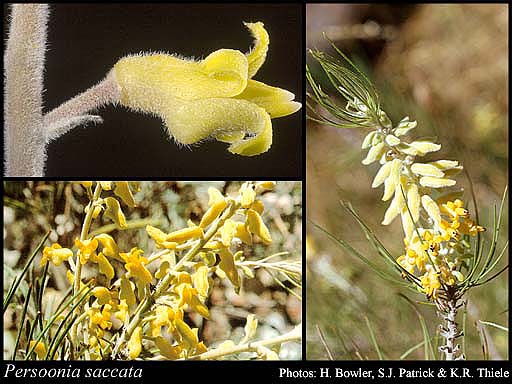- Reference
- Prodr. Suppl. 12 (1830)
- Conservation Code
- Not threatened
- Naturalised Status
- Native to Western Australia
- Name Status
- Current
Erect, sometimes spreading to decumbent, lignotuberous shrub, 0.2-1.5 m high. Fl. yellow/green-yellow, Jul to Dec or Jan. White or grey sand, gravel, sandy clay.

Scientific Description
Shrubs, 0.2-1.5 m high; branchlets hairy, ribbed. Leaves alternate, 25-100 mm long, 1-1.5 mm wide, glabrous; lamina flat, more or less the same width throughout, entire, smooth, the margins revolute; apex obtuse. Inflorescences yellow; pedicels 5-7 mm long, hairy. Perianth 11-12 mm long, irregular, hairy, the hairs appressed or spreading; anther appendage present, 1.2-1.7 mm long; ovary glabrous; pistil 6-8 mm long. Flowers in January, July, August, September, October, November or December. Occurs in the South-west (SW) Botanical Province(s), in the Swan Coastal Plain (SWA), Avon Wheatbelt (AW), Jarrah Forest (JF), Warren (WAR) or Esperance Plains (ESP) IBRA subregion(s).
Distribution
- IBRA Regions
- Jarrah Forest, Swan Coastal Plain, Warren.
- IBRA Subregions
- Dandaragan Plateau, Northern Jarrah Forest, Perth, Southern Jarrah Forest, Warren.
- IMCRA Regions
- Central West Coast, Leeuwin-Naturaliste.
- Local Government Areas (LGAs)
- Armadale, Augusta Margaret River, Bayswater, Busselton, Canning, Capel, Chittering, Claremont, Cockburn, Donnybrook-Balingup, Fremantle, Gingin, Gosnells, Harvey, Kalamunda, Kwinana, Mandurah, Melville, Murray, Nannup, Perth, Rockingham, Serpentine-Jarrahdale, Stirling, Swan, Wanneroo, Waroona.